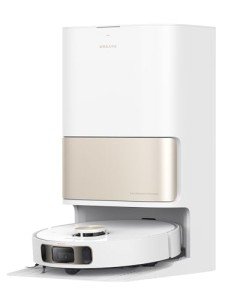Robotic Vacuum Cleaner Comparison: The Future of Home Cleaning
Recently, robotic vacuum cleaners have actually changed the way we maintain tidiness in our homes. With best robot vacuums in technology and the incorporation of synthetic intelligence, these devices have actually developed from simple novelty items to important home appliances. This post provides a comprehensive comparison of a few of the leading robotic vacuum on the marketplace, helping consumers make informed decisions when picking a design that suits their requirements.
Comprehending Robotic Vacuum Cleaners
Robotic vacuum are self-governing makers created to clean floors instantly. Equipped with best robot vacuum cleaner , they navigate around obstacles and change their cleaning paths for optimal effectiveness. The key features that separate various models consist of suction power, battery life, app connectivity, navigation innovation, and price.
Key Features to Consider
When comparing robotic vacuum cleaners, potential purchasers must take into consideration the following elements:
- Suction Power: Measured in Pascals (Pa), suction power figures out the efficiency of getting dirt and debris.
- Battery Life: The length of time a vacuum can run before needing a recharge significantly impacts its cleaning performance.
- Navigation Technology: Models might use basic random navigation or advanced mapping technologies (like LIDAR) that allow them to develop a map of the home.
- Smart Features: Connectivity to smartphone apps or smart home systems can boost use and control.
- Filter Type: HEPA filters are recommended for allergic reaction sufferers, as they trap allergens and enhance air quality.
Comparison of Top Robotic Vacuum Cleaners
Below is a comparison table of some of the best robotic vacuum available in 2023:
| Model | Suction Power (Pa) | Battery Life (minutes) | Navigation Technology | Smart Features | Price (GBP) |
|---|---|---|---|---|---|
| iRobot Roomba i7+ | 1700 | 75 | Smart mapping | App control, voice command | ₤ 949 |
| Roborock S7 | 2500 | 180 | LIDAR | App control, multi-floor | ₤ 649 |
| Neato D7 | 2000 | 120 | LIDAR | App control, zone cleaning | ₤ 599 |
| Ecovacs Deebot T10 | 3000 | 150 | Smart mapping | App control, room detection | ₤ 799 |
| Shark IQ Robot | 1200 | 90 | Random | App control, self-emptying | ₤ 399 |
Explanation of the Table
- iRobot Roomba i7+: Known for its robust cleaning capability, it features smart mapping innovation that enables it to designate particular areas for cleaning. Its self-emptying function is a plus for convenience.
- Roborock S7: This design excels in suction power and battery life, making it ideal for larger homes. Its LIDAR technology assists create an effective cleaning path, and it can vacuum and mop all at once.
- Neato D7: The D-shape design allows for better corner cleaning, and it features strong suction power. Its LIDAR navigation allows it to draw up cleaning locations precisely.
- Ecovacs Deebot T10: Boasting the highest suction power and advanced navigation, this model can manage numerous floors successfully. It's a flexible option for homes with varying floor types.
- Shark IQ Robot: A budget-friendly option that still uses smart functions. Its self-emptying ability and app integration make it a useful option for those searching for a strong cleaning buddy without breaking the bank.
Benefits of Robotic Vacuum Cleaners
Robotic vacuum cleaners offer numerous benefits that contribute to their increasing appeal among consumers:
- Time-Saving: Automated cleaning permits users to release up valuable time that can be spent on other activities.
- Convenience: Many designs can be set up through apps to clean at specific times, minimizing manual effort.
- Accessibility: They can reach under furniture and in tight areas where conventional vacuums might struggle.
- Daily Maintenance: Regular use of robotic vacuums can assist keep a regularly clean environment, promoting better total home hygiene.
Frequently Asked Questions About Robotic Vacuum Cleaners
1. How often should best robot vacuum deals run my robotic vacuum?
It is recommended to run the robotic vacuum a minimum of 2-3 times a week to preserve tidiness, though day-to-day use can be beneficial, especially in homes with animals or high foot traffic.
2. Do robotic vacuums deal with carpets?
Yes, numerous robotic vacuums are designed to work on carpets, however effectiveness may vary based upon the design's suction power and brush type. Search for models particularly pointed out as efficient for carpets.
3. Can robotic vacuums clean pet hair?
Most robotic vacuums can successfully get pet hair, however those with strong suction and tangle-free brush designs are particularly appropriate for this job.
4. How do I preserve my robotic vacuum?
Regular maintenance consists of cleaning the brushes and sensors, clearing the dustbin, and occasionally changing filters to guarantee optimal efficiency.
5. Are robotic vacuums worth the investment?
While they tend to be more expensive than conventional vacuums, the convenience, effectiveness, and time-saving aspects make them a worthwhile investment for lots of families.
The market for robotic vacuum cleaners continues to expand as technology develops, offering consumers a range of alternatives to suit various cleaning needs and spending plans. By carefully considering functions such as suction power, battery life, and smart capabilities, users can select a design that aligns with their way of life. Whether for benefit, ease of use, or remarkable cleaning performance, robotic vacuums are certainly reshaping the future of home cleaning.

